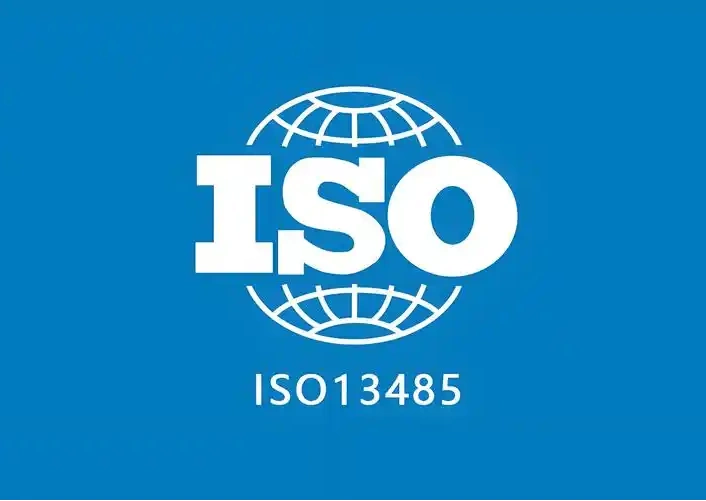
What is the ISO13485 standard?
The Chinese name of ISO13485 is "医疗器械质量管理体系要求". As medical devices are a special type of product involving key aspects such as saving lives and treating diseases, merely following the general requirements of the ISO9000 standard for regulation is insufficient. Therefore, the ISO organization has developed the ISO 13485:1996 standard (YY/T0287 and YY/T0288), which specifically sets out particular requirements for the quality management system of medical device manufacturing enterprises. These requirements aim to prompt medical device manufacturing enterprises to establish a more adaptable management system that is more focused on the safety and effectiveness of medical devices, playing a significant role in ensuring the quality of medical devices. Iso 13485 adopts the relevant concepts of PDCA in the ISO9001 standard. Compared with the ISO9001 standard which is applicable to all types of organizations, ISO13485 is more professional and focuses on organizations related to the design and development, production, storage and distribution, installation, service, and final decommissioned and disposal of medical devices. At present, organizations can establish systems or seek certification based on the ISO13485:2016 standard.
The key contents of the ISO13485:2016 standard: This standard takes regulatory requirements as the main line and strengthens the primary responsibility of enterprises to meet regulatory requirements. This standard emphasizes the management process of risk-based methods and emphasizes that organizations should apply risk-based methods to the appropriate processes required to control the quality management system. This standard places particular emphasis on the requirements for communication and reporting with regulatory authorities. This standard, based on ISO9001, places greater emphasis on the requirements for documentation and record-keeping.
Applicable enterprise types
The main types of organizations involved in ISO13485 certification include: medical device designers and manufacturers, medical device distributors, medical device service providers, medical device software and hardware developers, and medical device component/material suppliers.
The scope of relevant products applicable to ISO13485 certification:
The products involved in ISO13485 certification are divided into seven technical fields:
1.Non-active medical devices;
2.Active (non-implantable) medical devices;
3.Active (implantable) medical devices;
4.In vitro diagnostic medical devices;
5.Sterilization methods for medical devices;
6.Medical devices containing/using specific substances/technologies
7.Services related to medical devices
Classification Tips
The classification method of the 13485 certification technology field is derived from IAF MD9: In 2017, "Application of ISO/IEC 17021 in the Field of Quality Management Systems for Medical Devices (ISO13485)", its classification method is slightly different from the domestic classification method. This classification method includes both medical devices and activities related to medical devices, such as sterilization of medical devices and related services. Among them, the sterilization methods for medical devices include ethylene oxide sterilization, irradiation sterilization, moist heat sterilization, etc. Services related to medical devices include raw materials, components, assemblies, calibration, distribution, maintenance, and delivery related to medical devices.
The conditions for applying for ISO13485 certification:
The applicant should have a clear legal status and possess the corresponding licensing qualifications. 1. For manufacturing enterprises, Class I products need to provide the medical device product filing certificate and the production filing certificate. Class II and Class III products need to provide the Medical Device Product Registration Certificate and the Medical Device Manufacturing Enterprise License. 2. For business enterprises, those engaged in Class II products need to provide the filing certificate of medical device business enterprises. The operation of Class III products requires the provision of a Medical device business enterprise license. 3. For enterprises that only export, according to the document issued by the Ministry of Commerce, the Customs and the Drug Administration on March 31, when exporting medical and epidemic prevention items, in addition to meeting the requirements of the importing country, they also need to obtain the domestic medical device product registration certificate/filing certificate and the medical device manufacturing enterprise license/filing certificate. Before applying for certification, the applicant has established a documented management system in accordance with the standards (including the quality manual, procedure documents, internal audit materials, management review materials, and other relevant forms required by the procedure documents). The management system of the auditee has, in principle, been effectively operating for at least three months and has undergone a complete internal audit and management review (for the production of implantable medical device products, the system operation time is at least six months; for other products, the management system operation time is at least three months).
The significance of ISO13485 certification:
Reflecting the organization's commitment to fulfilling relevant laws and regulations helps the organization enhance its management level and operational performance, and conveys confidence to the public and regulatory authorities. The standards emphasize the requirements of risk management, helping the organization reduce the probability of quality accidents or adverse events through effective risk management


 18-Jun--2025
18-Jun--2025